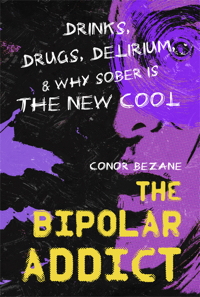 Allow me to let you in on a dirty little secret. Drug deaths are absolutely out of control. Especially from opioids.
Allow me to let you in on a dirty little secret. Drug deaths are absolutely out of control. Especially from opioids.
Deaths by drug overdose soared to more than 64,000 in 2016, the most recent year for which data are available, according to the National Institute on Drug Abuse. This includes deaths associated with heroin and fentanyl, as well as other synthetic prescription opioids like Oxycontin and Vicodin.
Gun deaths, on the other hand, including suicides and homicides, totaled 33,000, according to the Centers for Disease Control and Prevention.
In other words, there were more than 31,000 overdose deaths than shooting deaths in 2016.
But that dirty little secret is starting to get out. In the latest issue of TIME Magazine, photographer James Nachtwey chronicles the opioid crisis from all sides, from the users to law enforcement to rehabilitation counselors — in this captivating and powerful piece of journalism. In fact, TIME devoted this entire issue — every photo, every word — to the opioid crisis. I encourage everyone to check it out.
Among the people interviewed for this story is Bruce Langos, Director of the Criminal Justice Intelligence Center in Dayton, Ohio.
“If there was a terrorist that showed up in Montgomery County today and shot 50 people or 25 or 10 for that matter, this community would be in an uproar,” Langos told TIME. “There would be an army here trying to stop it. That’s exactly where we are with opioids.”
This is not to discount mass shootings like ones in Parkland, Orlando, Las Vegas, Aurora, and Newtown, among many others, but comparatively little attention is paid to the opioid crisis, which is taking more lives many times over.
According to the New York Times, drug overdoses have become the leading cause of death for those under the age of 50.
Deaths from opioids are rising exponentially. In Summit County, Ohio, for example, drug deaths soared from 99 in 2013 to 312 in 2016, says the Times.
Fentanyl is the latest drug to claim massive amounts of lives and was the culprit that killed both Prince and Tom Petty.
The East Coast has been hit the hardest, with Florida, Maryland, Pennsylvania, and Maine bearing the brunt of most of the ODs per capita.
Not only do we need action on gun safety and control, we need more funding for drug and alcohol rehabilitation and counseling.
There’s also the mental health component of addiction, which really gets downplayed. Many people use because of their underlying mental health problems.
Substance abuse rehabilitation costs the U.S. more than $600 billion every year. The alternative is incarceration, which costs $24,000 per person yearly, according to the National Institute on Drug Abuse.
More than half — 54 percent, or $598.5 billion — of our nation’s annual budget is spent on the military, according to the National Priorities Project, a nonprofit group that bills itself as “the people’s guide to the federal budget.”
We as a nation need to be spending more money on substance abuse and mental health treatment and less on the military, for which spending is out of control. The lives in our communities are at stake.
From wars to national disasters to global health crises, TIME photographer James Nachtwey has traveled the world in pursuit of harrowing stories. But it’s right here, in the U.S., where he is now witnessing death and destruction.
“In revisiting my own country, I discovered a national nightmare,” he says of the American opioid crisis. “But the people living through it aren’t deviants. They are ordinary citizens, our neighbors, our family members. I don’t think I met one user whom I would consider to be a bad person. No one wants to be an addict.”
And yet addicts are dropping dead before our eyes in killing fields of Main Street USA.
The Substance Abuse and Mental Health Services Administration (SAMHSA) has a national hotline open 24/7 for those who need to talk. The number is free and anyone can call 1-800-662-HELP. There is also the National Suicide Prevention Lifeline, which can be reached at 1-800-273-TALK.







